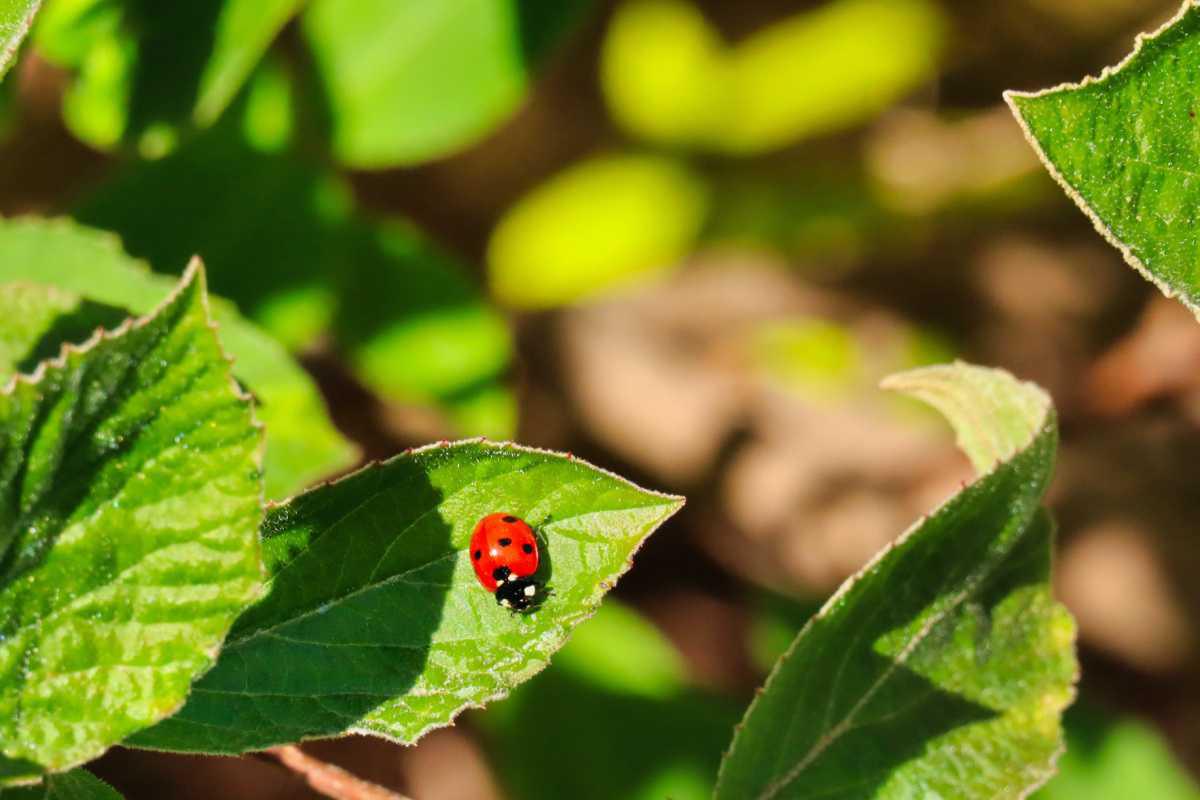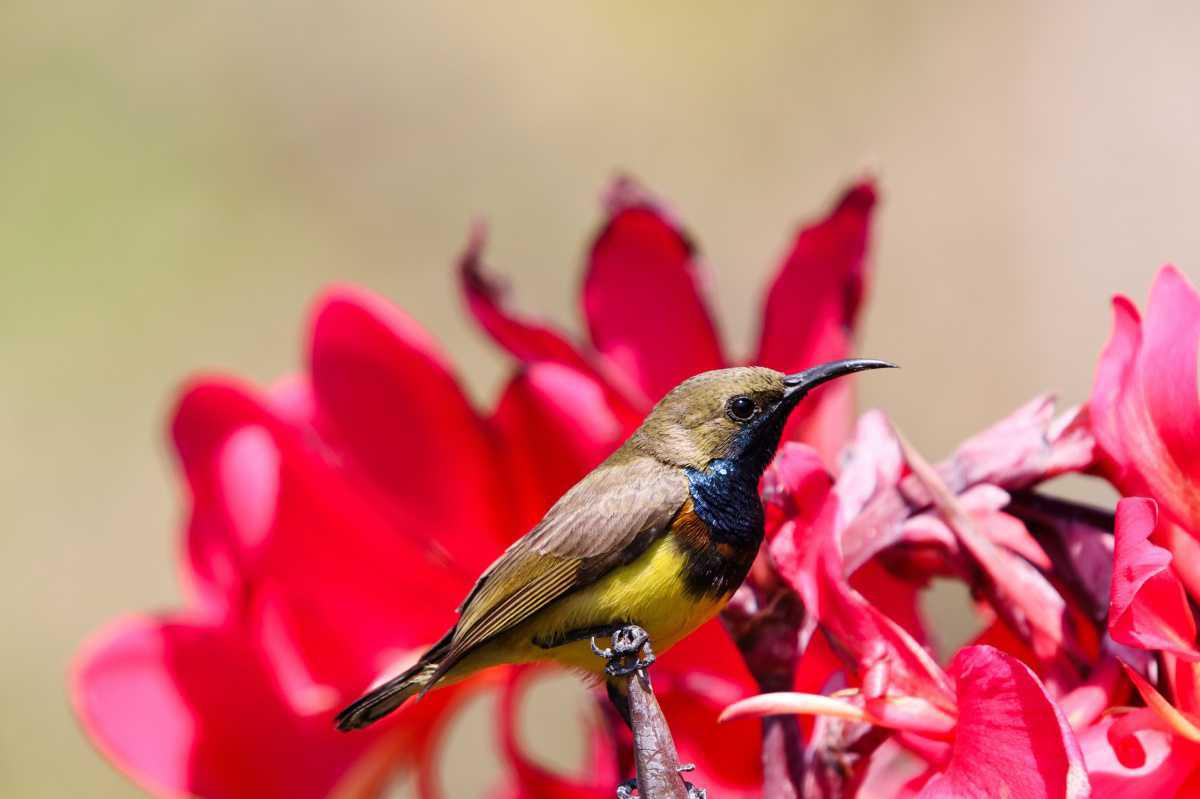At Granny Mouse, we spend a lot of time maintaining the biodiversity of our gardens whilst still keeping them looking beautiful enough to photograph!
Shaun Granger, General Manager of Granny Mouse, keeps an eye on the lovely landscaping whilst enjoying being able to watch and share the rich natural heritage of this beautiful country destination with guests.
Here are his tips for taking nature home with you to your garden:
Choose the right flowers
Flowers provide pollen and nectar for bees, butterflies and other insects that perform the vital task of pollination. Without them, we’d probably have no seeds or fruit!
Choose plants that provide pollen and nectar for as long a season as possible - from spring through to autumn - and that provide food into early winter. You’ll find that most of our busy insects prefer a local lunch, so try to make sure that you have as many flowering indigenous plants as possible. Avoid too many highly-bred cultivars or exotic plants with big and blowsy or double flowers, most of which contain little or no pollen or nectar.
Grow a mix of trees and shrubs
Grow a range of trees, shrubs and climbers, or a mixed hedge to provide food and shelter. The biodiversity found in our gardens shows that that larger plants, particularly trees, support more wildlife. As well as providing food in the form of flowers, fruits and seeds, they provide cover and nesting sites for garden animals, from insects to larger species such as lizards and birds. Fruit trees support a range of specialist native wildlife and can provide for them while also supplying you with an edible and useful crop.
Look after mature trees
If you have a small garden that doesn’t allow for big trees, get some planted in the neighbourhood and protect those that are already there – large street trees provide a vital habitat for a range of wildlife that may visit nearby gardens while foraging. Wildlife rarely respects garden boundaries: try to see your own plot as part of a wider web of interlinked gardens and green space.
Add water
Ideally dig a pond, but a container of water will suffice. The single easiest way to add wildlife value to a garden is to install a pond, however tiny - a large pot or even an inverted dustbin lid in an out-of-the-way spot will do. Make sure ponds have at least one sloping side to allow creatures an easy way out. Most wildlife, including amphibians such frogs, like shallower water than is generally thought.
Bird baths are really enjoyed by our winged friends in hot summers and make lovely focal points in your garden. Either add one to a hanging feeder in a tree or buy one on a stand to place in the middle of a flower bed.
Leave a pile of dead wood in a shady spot
Decaying wood provides an ever-rarer habitat to a range of specialist wildlife that is growing increasingly uncommon, such as beetles and their grubs, and many species of fungi. It also provides cover and hibernation sites. Any unstained or unpainted wood is suitable, although big, natural logs are best, ideally partly buried. Log piles can look quite architectural and rustic and can also be combined with plants to act as architectural features - although many people do prefer to tuck them out of sight.
Compost, compost, compost
Composting your garden waste helps all your garden plants and wildlife as it speeds up the natural recycling of nutrients by harnessing native decomposer organisms especially fungi and soil bacteria. You can either make your own or buy an organic variant from a nearby garden centre. If you are making your own, make sure that you include all sorts of good things – veggie peels, egg shells, newspaper, garden cuttings – but make sure that you do not add weeds pulled from beds as this will simply encourage an infestation in your garden. Give your compost heap or container a bit of water every now and again to maintain the process.
Why compost?
- Compost makes for healthy soil, which is good for everything living in it and growing on it
- It is an excellent mulch
- It can be free and easy to produce
- Unlike organic matter imported from elsewhere, it comes without packaging or 'fuel miles'
- Compost heaps also shelter many small creatures (and some larger ones, like worms and snakes), which enjoy the heat released by decomposition.
Provide food and water for birds all year
Garden birds are some of the most conspicuous garden wildlife and are easy to attract with supplemental feeding. Over the winter, supplementary food can mean the difference between life and death for many, especially when winters may get a little cold.
Ideally, offer a mix of food including sunflower hearts, seeds, kitchen scraps or proprietary seed mixtures to supplement natural food such as berries and seed heads. Don't forget that a supply of clean, unfrozen water is just as vital for feathered visitors – and ensure feeding tables are not accessible to cats or monkeys.
Place feeders close to other vegetation or tie them in trees so birds have a landing spot and won’t feel vulnerable as they will in the middle of a big, open space.
Don’t be too tidy
This doesn't mean your garden has to look a mess, but piles of leaves and twiggy debris provide both food and habitat for many species. If you leave perennials uncut over winter, their hollow stems can shelter hibernating insects. Piles of stones also make good habitats, particularly for hibernating reptiles and amphibians - tuck them away in hidden corners, at the back of borders or even behind the shed.
Allow a patch of grass to grow longer
If you don't have room for, or don't want, a full-scale meadow, simply allowing patches of lawn to grow longer will provide shelter for small mammals such as mice and food for some butterfly caterpillars – not all of these eat cabbages or nettles, contrary to popular belief. Alternatively, you can buy indigenous, decorative grasses that are great ground covers and often flower, attracting bees and butterflies.
Garden sustainably to help protect wildlife
Sustainability is an environmental buzzword that simply means minimising your use of finite resources (such as water and energy) in favour of those that are continuously produced by natural processes (power from wind turbines or making your own compost).
Synthetic pesticides are not only toxic to more than the target organisms, they are extremely energy intensive to produce, so employ them as a last resort wherever possible. Avoid peat-based composts, choose sustainably-sourced wood for patio furniture, recycle all you can and save water wherever possible.
Choose plants wisely and group them – put those that need less water together and those that are thirstier in a separate area. That way, you will not have to water the whole garden incessantly.
Scatter wildflower seeds to create a meadowland
Meadows are simply mixtures of grasses and wildflowers. We have lost 96% of our diverse, species-rich meadows since the 1950s, so re-creating them in the garden can help redress the balance. They are great for insects, they are low maintenance and they make a good, more natural alternative to a labour-intensive lawn.
Make a rock garden
Steeply sloping ground, cliffs and rocky areas support their own specialised species of plants and animals adapted to surviving in areas with poor, thin soils. Their garden equivalents are rock gardens and gravel beds which can be a great way of preventing erosion. Planted well, these are low maintenance and, if terraced, need little watering. Succulents and aloes are also water wise plants and have architectural shapes that go well with rocks – and they attract wildlife such as bees which are important pollinators, especially in winter.
For more information go to www.grannymouse.co.za



